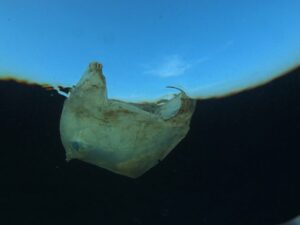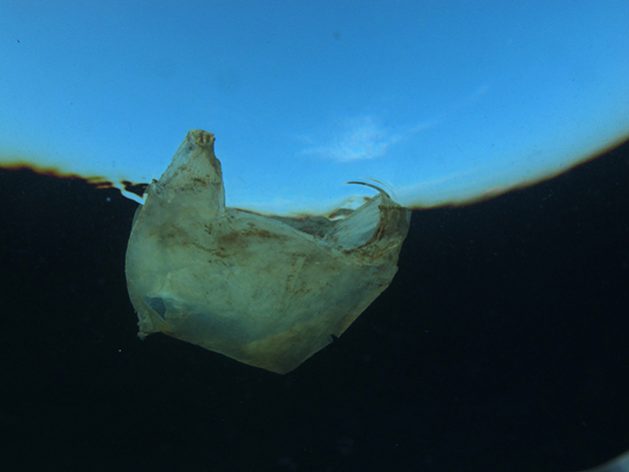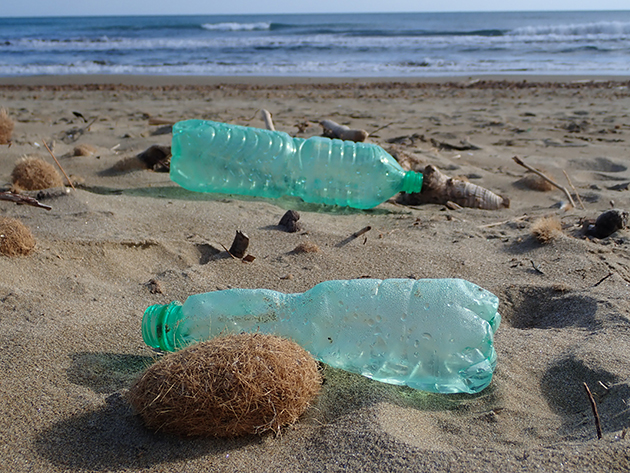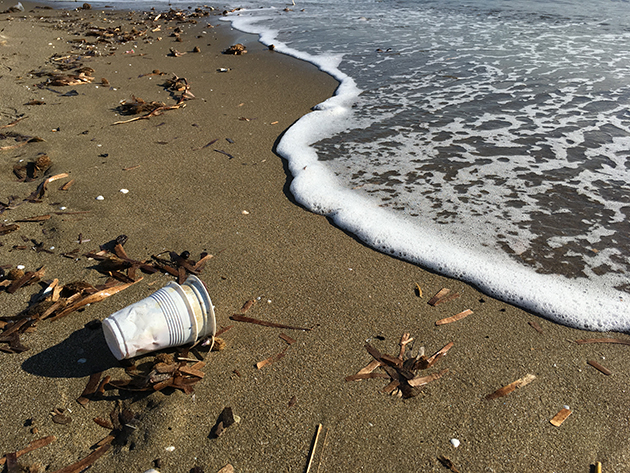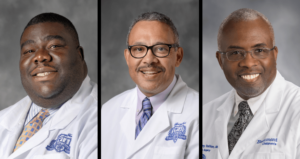
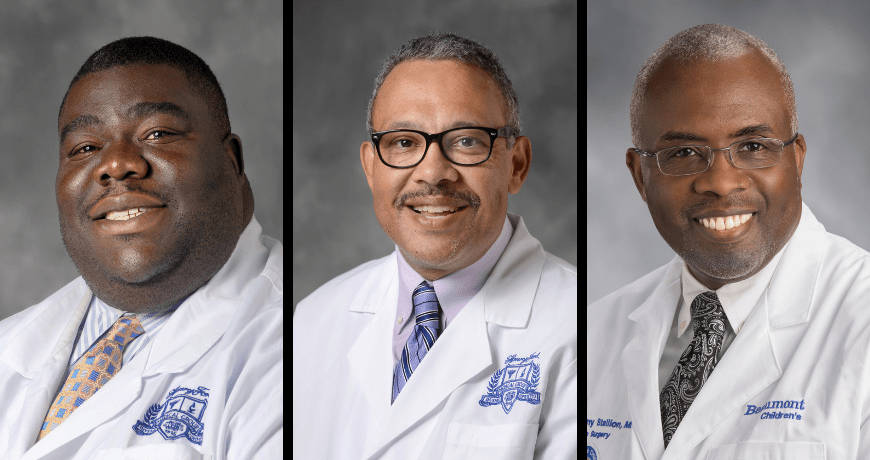
Dr. Jason Denny, far left, is a senior staff surgeon and director at the Center for Living Donation at the Henry Ford Transplant Institute and chair of the Detroit Minority Organ Tissue Transplant Education Program (MOTTEP) Foundation. Dr. James J. Jeffries II, center, a senior staff internist with the Division of Hospital Medicine, primarily operates out of Henry Ford West Bloomfield. Dr. Anthony Stallion, far right, chief of Pediatric Surgery at Beaumont Children’s, specializes in pediatric general and thoracic surgery.
Photos provided by Henry Ford, Henry Ford West Bloomfield, and Beaumont Children’s Hospital
“It’s hard to be what you can’t see.”
Black American author Jason Reynolds shared his thoughts in this quote about growing up and becoming a writer during a time he didn’t have any role models that he could look to for his career profession. The writer overcame the challenge of not reading a book until he was 17 years old.
In the last 40 years or so the needle hasn’t moved much when it comes to seeing more Black men in the medical field.
The number of Black male doctors there are in America is extremely low: roughly 3 percent, according to nationwide statistics.
The Michigan Chronicle interviewed three Black male doctors (ranging in career fields and experience in metro Detroit) to get their take on why these statistics are the way they are, what can be done and what might the future hold.
Dr. Denny is In
Dr. Jason Denny, 51, a senior staff surgeon and director at the Center for Living Donation at the Henry Ford Transplant Institute and chair of the Detroit Minority Organ Tissue Transplant Education Program (MOTTEP) Foundation spoke about his lengthy career in medicine.
Denny, who grew up in New York, said that his brother is also a transplant surgeon, “which is a little weird.”
“My brother is five years older than me, and I knew I wanted to go into transplant a little earlier than him. He obviously did it before me,” Denny said, adding that the history of Black surgeons in the country has racist roots.
Denny quotes a 1987 book, “A Century of Black Surgeons: The U.S.A. Experience” by Claude H. Organ Jr. and how Black surgeons were initially not allowed to practice in the United States.
Even in the modern times, Denny said that he followed Black medical pioneers decades earlier and saw how they overcame bias and more.
“I met a lot of these guys, their stories [were filled with] a lot of adversity,” he said adding that they helped motivate him. “It was really inspiring to me and set me on a path. Once you know what legacy is and where you fit in it is a lot easier to pursue the dream.”
Denny joined student organizations in school and Black medical student organizations around the country and he met other Black medical students who shared their stories.
“You can see yourself in their shoes,” he said.
Dr. Jeffries is In
Dr. James J. Jeffries II, a senior staff internist with the Division of Hospital Medicine, primarily operates out of Henry Ford West Bloomfield. He also works with the residency program teaching the second-and third-year Internal Medicine residents about hospitalist level of care.
Jeffries said that his interest in medicine started early in life when he was possibly an elementary school student.
“I found that science was definitely one of the drivers that I always enjoyed,” Jeffries, 59, said of biology and chemistry classes, in particular.
He added that the loss of his brother to acute lymphoblastic leukemia when he was a teenager was “one of the biggest inspirations” for him to pursue a career in medicine.
“I had no one else in the family in medicine,” he said, adding that his father did obtain a nursing degree, but he had no exposure to physicians of color in his formative years. A portion of his adulthood was much of the same.
Jeffries said that he was in his late 20’s when he met for the first time a Black physician in internal medicine who was one of two internists where he did his training at St. Joe’s in Ann Arbor.
“I came to Henry Ford in 1991 and was hired by a gentleman who is from Malawi — that was my first [Black] mentor when I became a senior staff at Henry Ford.”
He added that it “would be nice” to see great representation and have more Black men in the medical field.
“I talk about this constantly … how we don’t see the numbers — we need to start at an early age … to get to hopefully 10 percent or more of the physician workforce,” he said adding that this starts early in elementary school and middle school. “Identifying those that have the talent and the potential for matriculating into healthcare careers, especially medicine.”
Dr. Stallion is In
Anthony Stallion, chief of Pediatric Surgery at Beaumont Children’s, specializes in pediatric general and thoracic surgery, and hails from St. Louis, Mo., originally. The 60-year-old’s medical career began locally after he graduated from college in Michigan and started his pediatric surgery training at Children’s Hospital.
He was a general surgery resident in 1994 and completed pediatric surgery in 1996. Out of the 225 students graduating in his University of Michigan Medical School class in 1983, seven or eight were Black men.
“That wasn’t a lot then,” he said, adding that the numbers have gotten more than likely worse now.
Stallion said that the lack of Black men in this field boils down to “the lack of opportunity and the lack of chance to pursue careers.”
He added that the issue is not a lack of interest but “how we treat our African American males from the very beginning.”
He said it’s important to work with students, especially Black boys, and help cultivate their interest each step of the way.
“When you talk about the percentage who go into medicine … the vast majority of the people of color who were going into medicine are women,” he said. “The males have been left behind in a sense …not getting support and the mentorship and so forth that is necessary.”
Stallion said that having role models can be hard when they are not readily in front of Black boys.
“You don’t know that is a possibility for you and it’s hard for your eyes to be opened to something that you don’t know even exists,” he said.

